- March 28, 2024
Hand Signals for Dog Training: 11 Common Commands
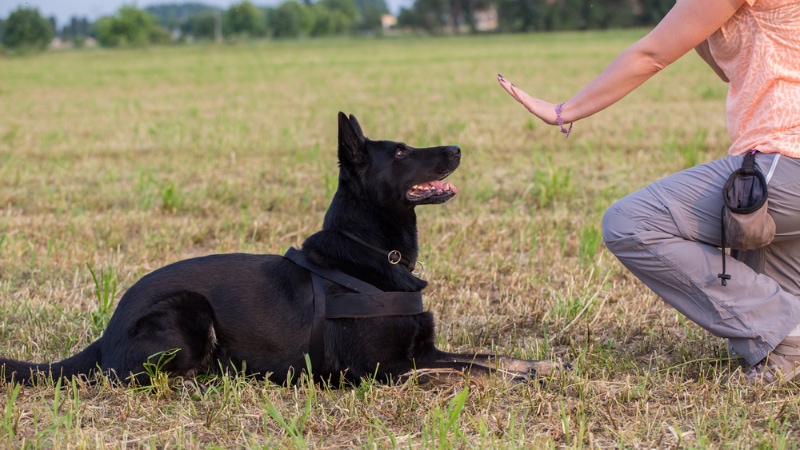
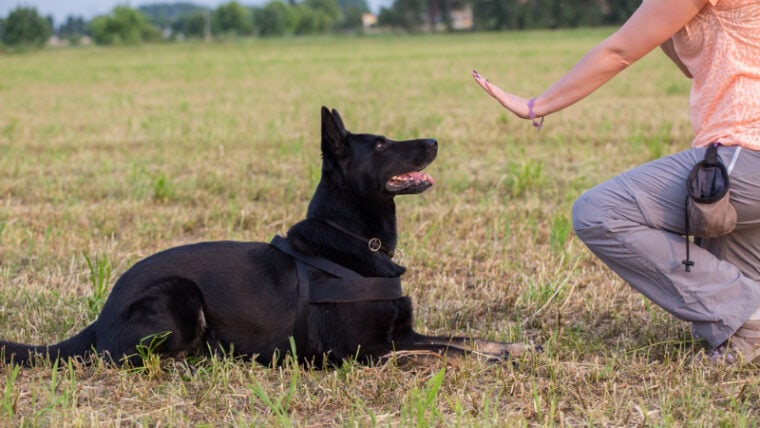
Teaching your dog hand signals for dog training is one of the best choices you can make for your dog’s future. Teaching your dog hand signals on top of voice commands adds a layer of security and a sense of normalcy for you and your dog. If you feel you’ve waited too long to try, there’s no such thing as “you can’t teach an old dog new tricks.” Dogs respond very well to visual cues and will enjoy spending some one-on-one time with you while training. Here are 11 common commands you can start teaching today.

The Benefits of Using Hand Signals
At some point, your dog may lose their hearing as they age and it will be very difficult for both of you to understand how to live day-to-day life. But if you’ve already taught your dog basic hand signals, transitioning into the new normal won’t be so bad.
You may also come across a situation where you need your dog to quietly follow through with a command. An example would be if you’re on a walk and you see a loose dog that could potentially be a threat. You don’t want to loudly say “come” or you might attract the other dog’s attention. A hand signal can usher you into a safer spot without escalating the situation.
The 11 Hand Signals for Dog Training
1. Come
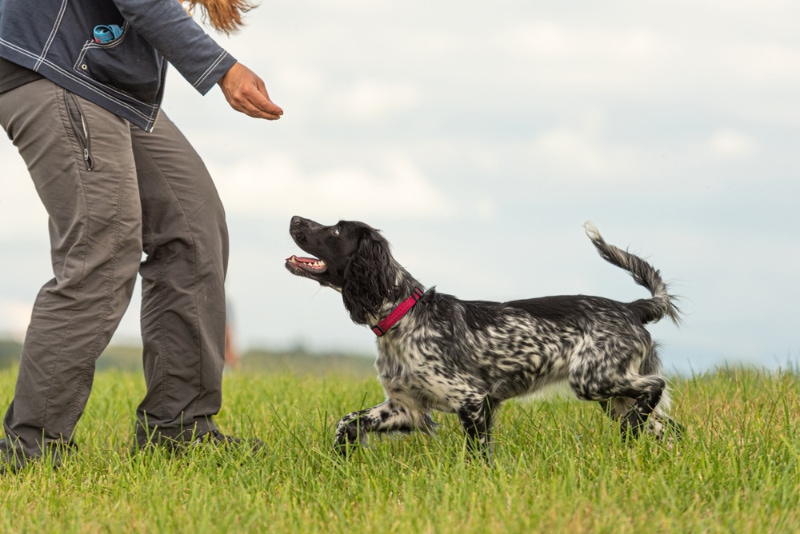
Come, or recall, is an essential command for all dogs. This command teaches your dog obedience, and reliability, and ensures their safety as well as other dogs and owners.
To signal:
Stretch both arms out horizontally, then bring both hands in and place them on your chest. Be sure your dog can see you doing this command since they will most likely be far away.
2. Sit
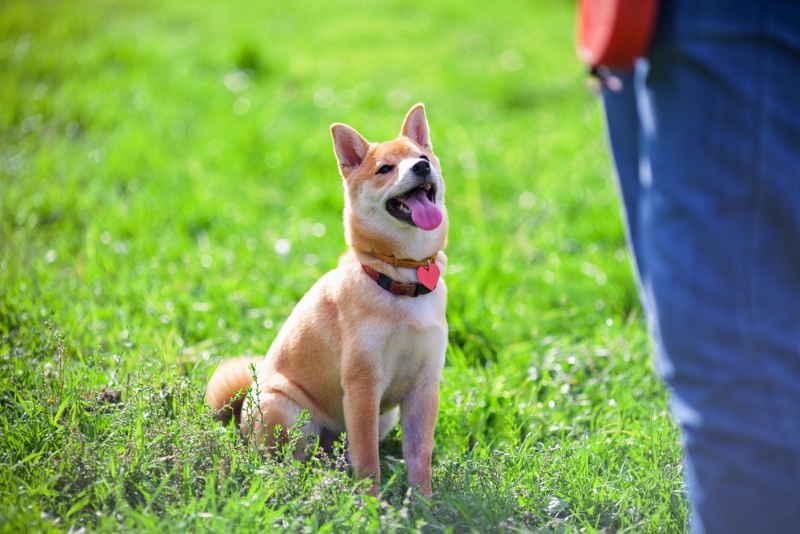
One of the most basic commands, sitting teaches your dog to relax before receiving attention or a treat. Sitting also teaches your dog self-control.
To signal:
Hold out your hand at waist height with your palm facing up. Raise your hand toward your shoulder, as if you’re lifting something.
3. Lay Down
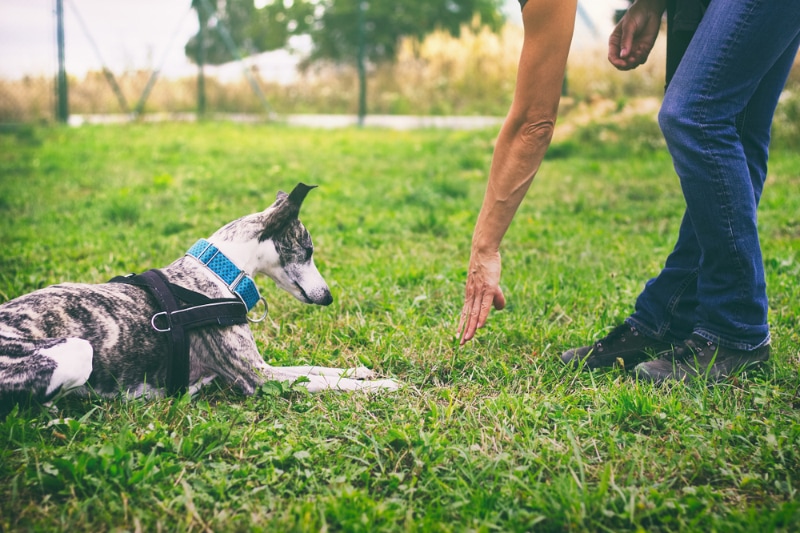
Like the sit command, the command to lay down teaches self-control, but at a deeper level.
To signal:
This will (almost) be the opposite of the sit command. Start with your hand by your shoulder with your palm facing your shoulder. Flick your wrist up so the hand lowers to the ground.
4. Spin
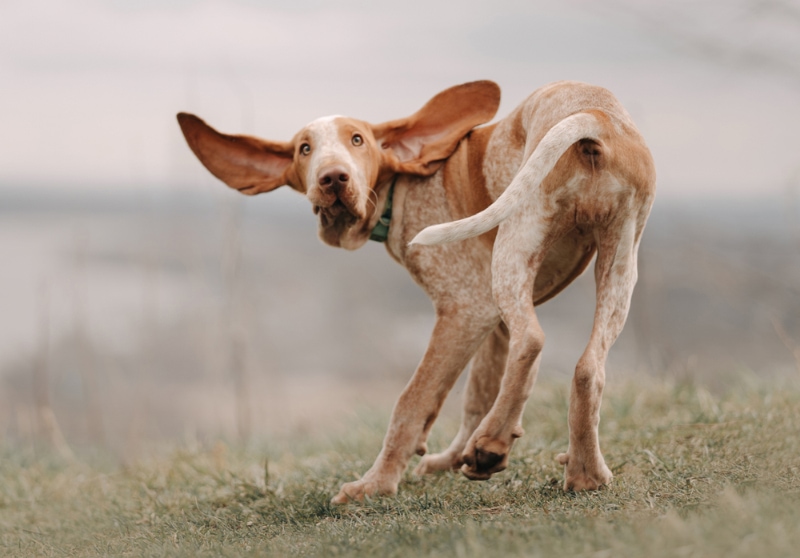
A simple trick, the spin command is both cute and helpful if you were to enter your dog into a dog show.
To signal:
Hold out your hand and move it in a quick, circular motion with one finger pointed forward.
5. Rollover
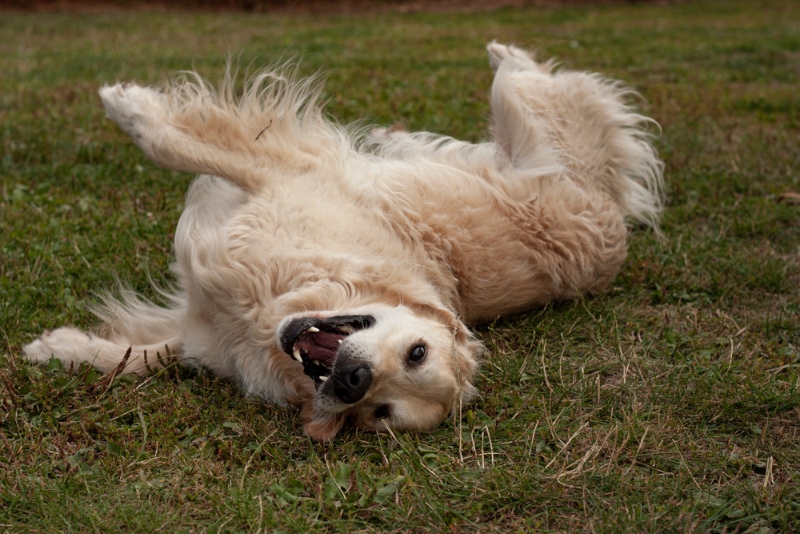
Rollover is a cute command that often ushers in belly rubs but can be used for practical reasons as well, depending on the scenario.
To signal:
Start with one arm extending out with the fingers pointed, and the other arm moves in an arc shape.
6. Stay
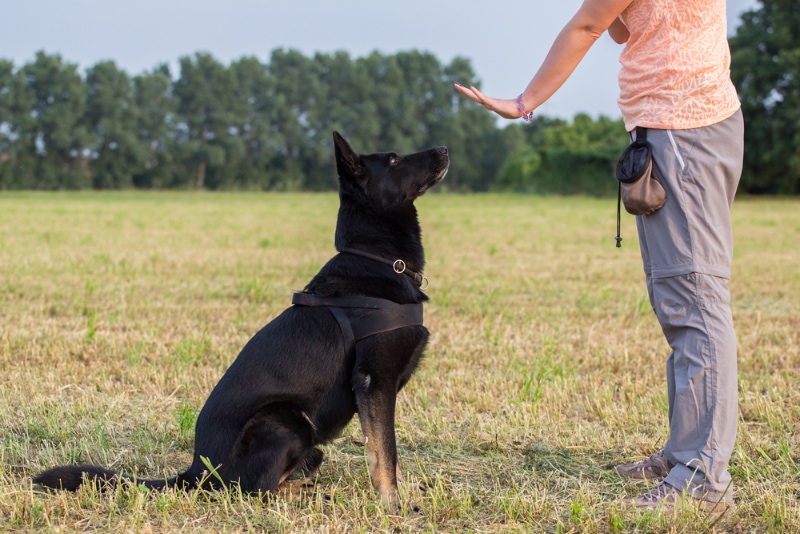
Signaling your dog to wait helps your dog stay in one place while you walk away. Dogs will learn that they should listen to what you have to say next. The free command is typically what follows.
To signal:
Hold out your hand at your waist with your palm facing forward.
7. Free
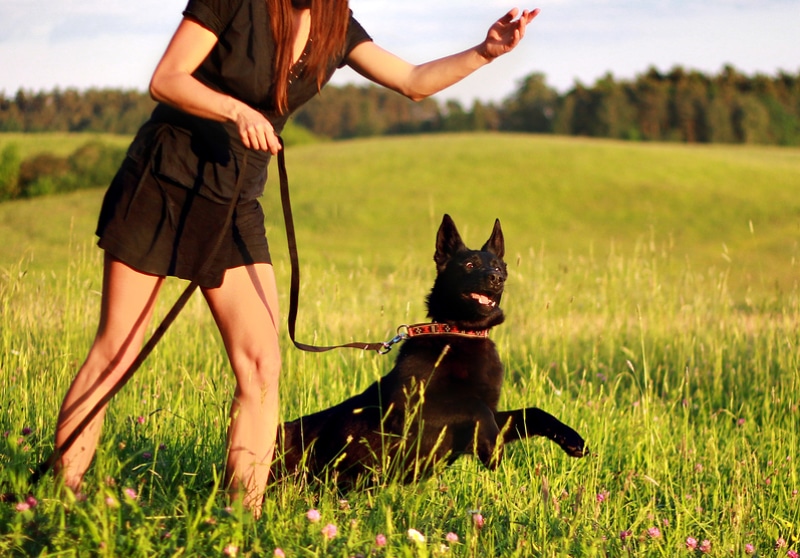
The free command releases your dog of whatever command you are executing, such as sit or stay.
To signal:
Raise both hands to your shoulders with your palms up, as if you’re shrugging.
8. Drop
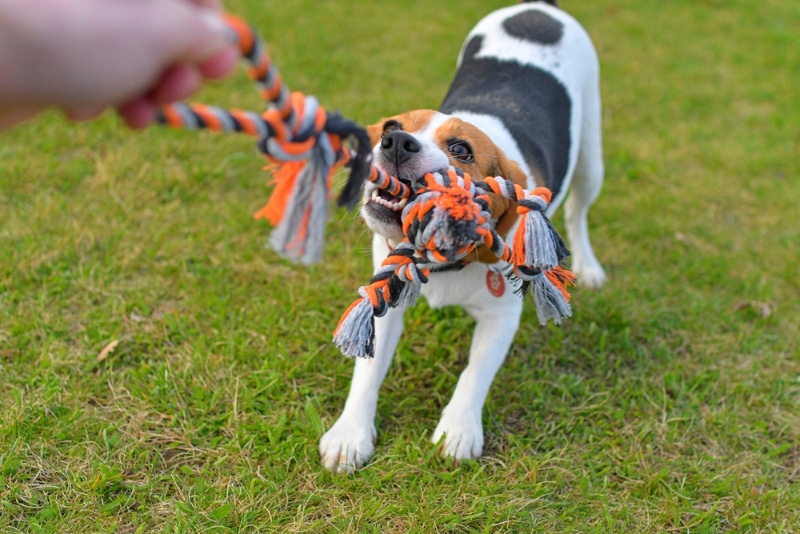
Drop is an effective command to teach your dog to release its grip on something such as a toy.
To signal:
Point down toward the ground.
9. Fetch
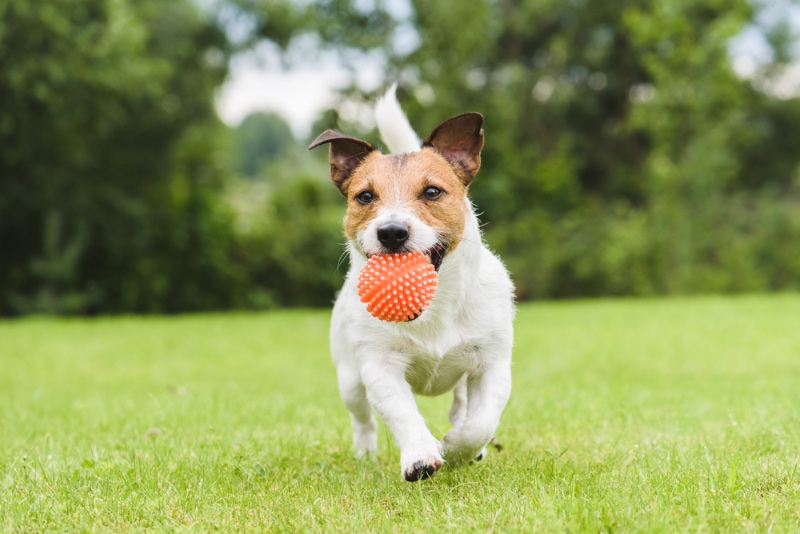
This is a great command to teach your dog so you can enjoy playtime even if hearing is an obstacle.
To signal:
With your hand at your side, point your finger and raise it so it points toward the object to retrieve.
10. Crawl

Crawl is a cute trick but can also be used in emergencies if needed.
To signal:
Signal your dog to lie down. Next, hunch further down and point to where your dog needs to crawl.
11. Shake
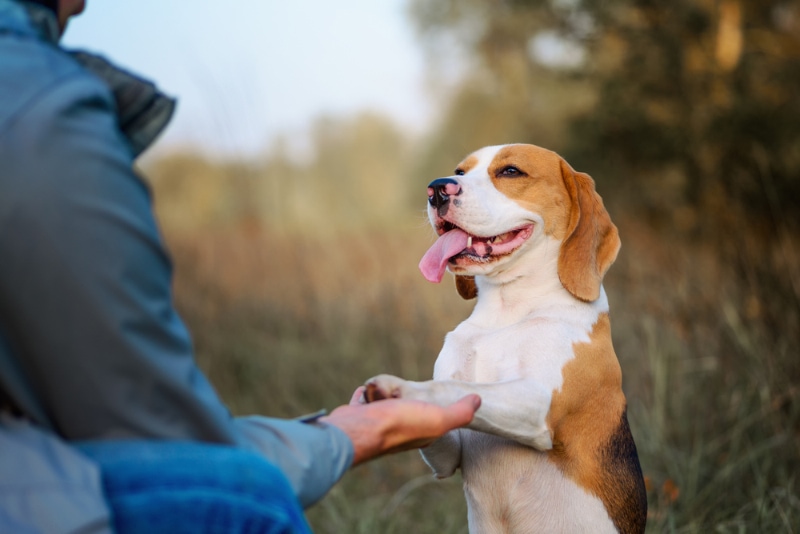
The shake command is a cute and easy trick for dogs, especially for older dogs with arthritis who can’t partake in physically demanding tricks.
To signal:
Cup your hand in front of your dog with the palm facing up.

Adding Hand Signals to Already-Learned Behaviors
If you’ve already taught your dog voice commands but have never tried hand signals, or perhaps your dog went deaf before you could try, don’t worry; dogs respond very well to visual cues and oftentimes even better than verbal cues.
The key is to teach your dog to focus rather than relying on voice fluctuations, but the methods will still be the same: show the hand signal, teach the desired behavior, and offer a treat.
When you begin, choose a few hand signals to master then move on to others. Be consistent with training and choose high-value treats that are quick to eat.

Conclusion
Teaching your dog hand signals is an excellent way to ensure security for the future. Your dog may go deaf, or you might find yourself in a situation where you need to be quiet but give a command. Hand signals offer an extra layer of certainty in training. Plus, dogs respond better to visual cues anyway. Why wait to get started?
Featured Image Credit: Luca Nichetti, Shutterstock
Tags
What do you think?
Related Articles

New Puppy Checklist: Gear You’ll Need for Your New Dog
Getting a new puppy is really exciting, but before you welcome them home, it’s important to prepare your space for them. Since puppies need a

How Big Do Mini Poodles Get? Vet Reviewed Average Weight & Growth Chart – Dogster
The information is current and up-to-date in accordance with the latest veterinarian research. Learn more » When you buy a Miniature Poodle, you might not

Can Police Dogs Smell Nicotine? Vet Verified Facts & Info – Dogster
The information is current and up-to-date in accordance with the latest veterinarian research. Learn more » While cigarette sales have been declining steadily for decades,

How Old Is 5 in Dog Years? Vet-Approved Guide to Each Size of Dog – Dogster
The information is current and up-to-date in accordance with the latest veterinarian research. Learn more » A common method for calculating a dog’s age is

